Will the provident fund be "cancelled"? Huang Qifan and Dong Mingzhu both suggested cancellation, and the country officially responded.
"The provident fund has completed its historical mission and should be cancelled."
This kind of "suggestion" was put forward not by ordinary people, but by an expert with a high position in China’s financial and economic circles. He was Huang Qifan, former vice chairman of the NPC Financial and Economic Committee and mayor of Chongqing. In Huang Qifan’s view, the time is ripe to cancel the provident fund. Now, commercial banks have become the main body of providing mortgage loans, and the existence of housing provident fund is of little significance. More importantly, the abolition of the enterprise housing provident fund system will directly reduce the cost of enterprises and employees by 12%.
It is understood that Huang Qifan is not the only heavyweight who suggested "abolishing the provident fund system" in recent two years. Shortly after Huang Qifan’s speech, independent economist Ma Guangyuan also stated, "Huang Qifan ‘ Abolish the housing accumulation fund ’ Our proposal is reliable. I raised it ten years ago. So far, this view has not changed. " The implication is that I am very much in favor of canceling the housing provident fund, which is rooted in the obvious drawbacks of the system;
On April 29th, 2020, Dong Mingzhu supported Huang Qifan in an interview with The Beijing News. "I think we can take away the provident fund and liberate it. There is no need for the provident fund to exist now. Like our company, it is not needed at all. Every employee is given a suite, and there is no need for a provident fund. " Sister Dong’s meaning is very clear. Now the provident fund is only applicable to some enterprises, and considering the disadvantages of the provident fund, it is obvious that its advantages can be ignored. It is reasonable to cancel the provident fund, and it is a liberation for enterprises and individuals.
On April 30, 2020, Lou Jiwei, the chairman of the Global Wealth Management Forum and former Minister of Finance of China, also bluntly said, "I think the contribution rate of provident fund can be reduced to 5% in the future, including some experts’ suggestions to cancel the provident fund. I also agree."
To sum up, the experts suggest that the core reasons for canceling the provident fund are nothing more than three points:
In the face of millions or even tens of millions of high housing loans, housing provident fund loans with upper limits are undoubtedly a drop in the bucket. Moreover, the housing provident fund is earmarked for special purposes, and can only be used for purchasing, building, overhauling self-occupied housing or paying rent during the storage period. The use channels are narrow and it is quite inconvenient to withdraw. On the contrary, high-income groups pay more provident funds, which undoubtedly makes the provident fund a tool to widen the gap between the rich and the poor to some extent;
Second, the provident fund is a burden for enterprises and individuals, especially for low-income groups. The salary itself is not high, and there is not much left after deducting the provident fund. Moreover, due to various restrictions, the housing provident fund has been deposited for a long time and the rate is very low.
Third, the existence of provident fund means that someone has to be in charge. According to the data, there are 44,200 staff members and 3,350 outlets serving this system, which is undoubtedly a great waste of human resources. It will be more meaningful to cancel the provident fund and save this part of human resources.
Although many big coffee-level figures have made comments and suggested "canceling the provident fund", it seems that the vast majority of people do not buy it. According to Sina survey data, 70% of netizens "disapprove of canceling the provident fund system".
Experts are under pressure to cancel the provident fund. Why are hundreds of millions of Chinese ungrateful? We conclude that there are two main reasons:First, the housing accumulation fund is a basic welfare guarantee, a compulsory deposit, which is used to reserve the future cash flow of real estate allocation, and it is also a way for individuals to obtain low-interest housing financing loans from commercial banks. At present, the interest rate of the first home loan in major cities is 5.88%, but the interest rate of the provident fund loan is only 3.25%. According to the 20-year loan period of 900,000 yuan for both husband and wife, the total interest of pure commercial loans is 632,600 yuan, and the monthly payment is 6,385.73 yuan, but the total interest of provident fund loans is 325,100 yuan, and the monthly payment is 5,104.76 yuan. With the same amount and the same number of years, provident fund loans save almost half of the funds compared with commercial loans. In a word: low interest on housing provident fund loans can help low-and middle-income groups realize their dream of buying houses. If there is no provident fund system, it will be more difficult to buy a house entirely by commercial loans;
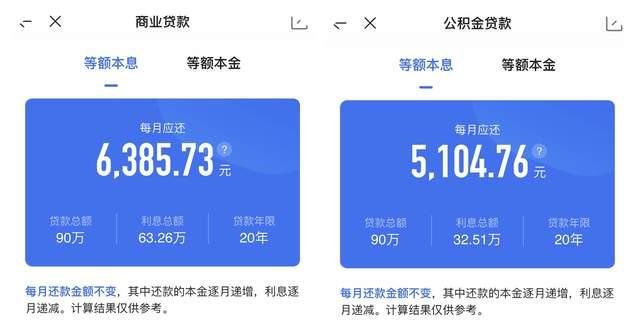
Secondly, with the reform and improvement of the housing provident fund system, the utilization rate of the provident fund has been greatly improved, and the threshold for using it has been greatly lowered. The provident fund is not limited to buying houses, renting houses, decorating and paying medical expenses for serious illness, etc., and can be withdrawn. Especially in many state-owned enterprises and institutions and unicorn private enterprises, the proportion of provident fund deposit is surprisingly high, which can be regarded as a high welfare for employees. To sum up, from a personal point of view, the existence of housing provident fund is of great benefit.
If the provident fund is really "cancelled", what will be the impact? 150 million people will have trouble sleeping!
According to the 2019 Annual Report of Housing Provident Fund, by the end of 2019, a total of nearly 150 million people had paid the provident fund, and the amount paid in that year was 23.7 trillion yuan, with a per capita income of 15,900 yuan. In 2019 alone, the withdrawal amount of provident fund reached 1.63 trillion yuan, and the personal housing loan issued was 1.21 trillion yuan.
In other words, if the provident fund is really abolished as suggested by Huang Qifan and Dong Mingzhu, it will directly make 150 million people sleepless — — As mentioned above, the housing provident fund is a basic social welfare guarantee, and the use of the working class is to buy a house with low-interest loans from the provident fund. If the provident fund is cancelled, it means that the joint benefits of 150 million people have been cancelled, so it is certain that they will not be able to sleep. Especially in the third, fourth and fifth tier cities, the role of provident fund is even greater, and many couples are looking forward to saving housing funds by provident fund loans. The cancellation of the provident fund means that the pressure on many people to buy a house will increase.
It is worth mentioning that if the provident fund is hastily abolished, nearly 45,000 employees involved in the provident fund employment will all be unemployed. How will these people be arranged?
Will the housing provident fund system be "cancelled"? The country officially responded.
Will the housing provident fund system be "cancelled" or will it continue to be "retained"? Until today, there has been controversy, and the public says that the public is right and the woman is right, but the final decision is still in the hands of the Ministry of Housing and Urban-Rural Development. In this regard, the state finally made a formal response — — On December 29th, 2020, Wang Menghui, Minister of Housing and Urban-Rural Development, published an article entitled "Implementing Urban Renewal Action" in People’s Daily, and finally got a clear answer about whether the housing provident fund system will be "cancelled" or "retained" in the future:
Reform and improve the housing provident fund system. Expand the scope of deposit to cover new citizen groups. Optimize the use policy to provide financial support for the development of rental housing and the transformation of old urban communities. Further strengthen the informatization construction of housing provident fund management and improve the level of supervision services.
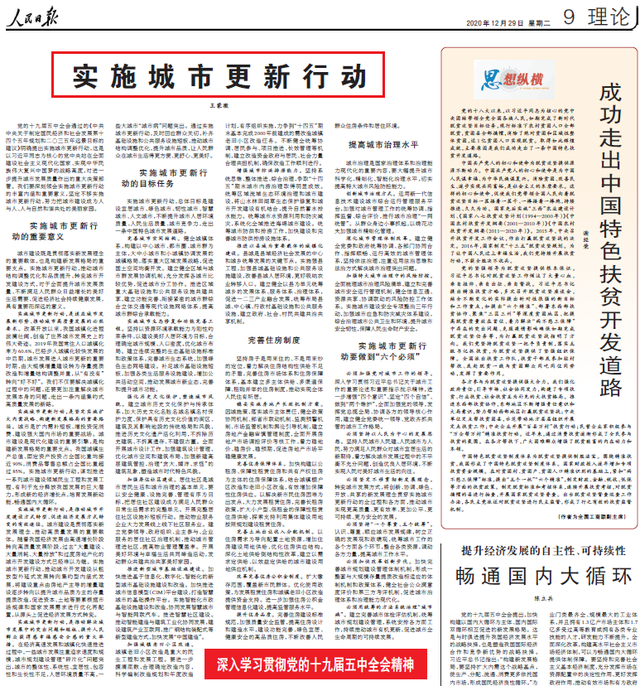
The official response to the provident fund is only 83 characters in total, but it reveals three key messages:First, the housing provident fund system will not be abolished; Second, we will vigorously carry out reform and improvement, and the direction of reform is: 1. Expand the deposit area; 2. Optimize the use policy; 3. Enhance transparency; Third, in the future, the state intends to let the provident fund provide financial support for rental housing and the transformation of old urban communities.
What happened later also confirmed that the provident fund was not cancelled, but was constantly improving and developing for the better — — The state issued a notice to support the provident fund for the housing renovation of residents in old communities. This means that the provident fund has not been cancelled, on the contrary, its scope of use is still expanding.

On January 1, 2021, Guizhou Province announced that from January 1, 2021, the provident fund can be used for the renovation of self-occupied housing in old urban communities. According to the relevant documents of the Housing and Construction Department of Guizhou Province, the maintenance of self-occupied housing refers to the renovation of self-occupied housing such as strengthening the housing structure, adding security facilities, repairing doors and windows, and installing indoor water (electricity, gas) pipelines.
Immediately afterwards, Ningxia Hui Autonomous Region, Yunnan Province, Hunan Province, Zhejiang Province and Shandong Province also issued documents clarifying the contents of the renovation that directly benefit residents or are closely related to residents, and mobilizing residents to contribute funds in three ways, including "drawing provident fund". Among them, Yunnan Province also made it clear that "residents are supported to withdraw housing provident fund for the renovation of self-occupied housing such as installing elevators". That is, according to the actual situation, residents can withdraw money from installing elevators, replacing windows, and modifying water and heating pipes.
Moreover, on May 11th, 2021, the Ministry of Housing and Urban-Rural Development issued a notice requesting Beijing, Fujian, Hubei, Hefei in Anhui, Zhuzhou in Hunan, Nanchong in Sichuan, Suining in Sichuan and Qingyang in Gansu to "increase the provident fund to support the old renovation", among which it was explicitly mentioned that "some funds can be arranged to support the renovation of old residential areas in local towns from the supplementary funds for low-rent housing construction paid by the housing provident fund center."
After the official response of the state, whether the housing provident fund system will be abolished or not, the answer is already clear:The housing provident fund system has been implemented in China for more than 20 years. Although it has been praised and criticized, it will not be cancelled for the time being because it is huge and involves the core interests of 150 million people. As for whether it will be cancelled later, it is still uncertain. As Xiaobo Liu, an expert in finance and economics, said, the housing provident fund system will probably exist until there is a better substitute.
At the same time, the national level has also paid attention to and listened to the suggestions and suggestions of many professionals, and is reforming and improving the housing provident fund system. To sum up, the reform of provident fund in the past five years mainly involves three aspects: first, it is committed to opening up the cross-regional use of provident fund as soon as possible; Secondly, the deposit ceiling has been raised. By the end of 2020, more than 60 cities have raised the deposit ceiling of provident fund. To put it bluntly, this is equivalent to giving people who pay the provident fund a "salary increase" in another form; Furthermore, the scope of use of the provident fund will be expanded, not only for low-interest loans to buy houses, but also for renting houses, renovating, renovating and treating major diseases. Of course, the provident fund will be fully used for the renovation of old communities in the future. For example, support the provident fund for installing elevators in old houses, diverting water and heating, and changing windows.
In fact, ordinary people are used to this system. With the further improvement of the system, if it is cancelled, it may attract more people’s opposition. Therefore, the dispute about "cancellation" or "retention" of housing provident fund can be stopped.
Is it a misunderstanding to call the police first when a traffic accident occurs? Details of the fatal accident caused by rear-end fire are exposed.
CCTV News:In the early morning of July 16th, a rear-end traffic accident happened in the South Fourth Ring Road of Beijing, which aroused public concern. After the accident, a short video recording a car from smoke to fire was spread on the Internet. According to the traffic police department, the accident caused two deaths in the rear car. The rebuke of passers-by, the driver standing by with a mobile phone calling the police, and the two lives swept away by the spreading fire … … This traffic accident caused a heated discussion.

Network video picture
"Look, there is someone (in the car). Don’t call first. You move your car forward, blow it up later, and move forward."
"This driver is still calling the police. He won’t save anyone in it. I’ll drive to pull it for you. I’ll pull it for you. You get the person out first."

From a video shot by passers-by, we can see that a white car rear-ended an engineering car, and the two cars stopped in the second lane on the right side of the road. At this time, the front side of the white car was already full of smoke, and there was a driver and a passenger in the car. In the driveway beside the two cars, there are other cars passing by in a hurry. The man standing by with a light-colored short-sleeved shirt and a mobile phone is the driver of the front car. As time went by, an open flame gradually appeared in the smoke in front of the vehicle in the picture.
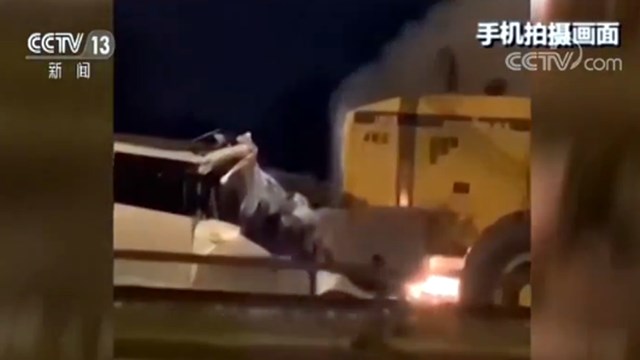
The fire spread rapidly in the car body, and several passers-by put out the fire with the fire extinguisher in the car, but at this time the fire was out of control and it gradually swallowed up the whole car.
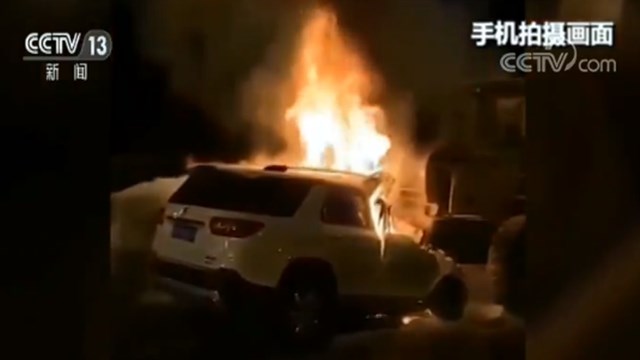
On July 16th, according to the traffic police department of Beijing, at about 3 o’clock on July 16th, a small ordinary bus caught fire when it was driving from west to east on the west side of shibalidian South Bridge, the main road of South Fourth Ring Road in Chaoyang District, Beijing. The accident caused two deaths of the driver and passengers in the small ordinary bus, and two cars were damaged. At present, this accident is under further investigation and handling.
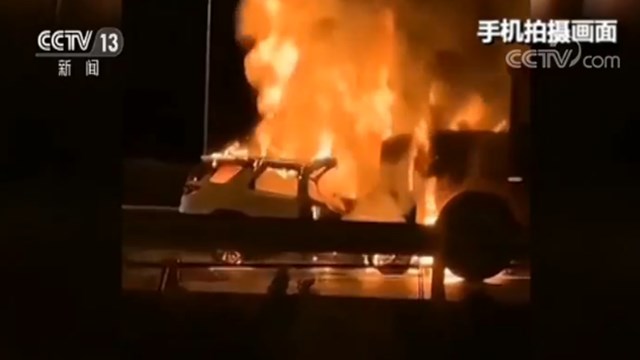
A video taken by passers-by for nearly two minutes recorded the process of white vehicles rolling from the front side to the whole car being swallowed up by open flames. After the video was posted on the internet, it triggered various discussions among the public:
Some people wondered: "The fire was not big at first, why didn’t you go up and look at the situation in the car and keep calling?"
Some people speculate: "The idea of (the driver) is to keep the scene as it is and wait for the traffic police to identify it. It is the other party’s main responsibility to prove it. He puts saving people’s lives behind him."
Someone asked: "Can a forklift get on the Fourth Ring Road? If the rear taillights are not lit, can you not rear-end? "
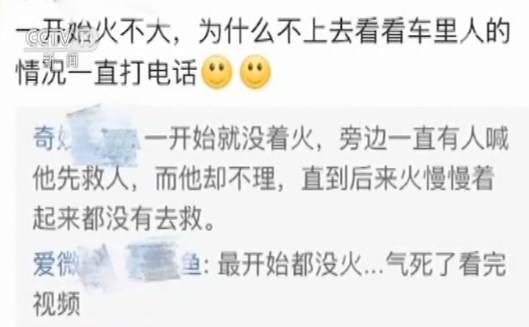
On the internet, there are also voices questioning the behavior of the passerby who filmed the video. On the evening of July 16th, another video was streamed on the Internet. "Let me clarify first, it’s not that I didn’t save people for the first time. This is all pushed down by everyone, and I can’t turn it over. I have more than 200 kilograms, and I can’t turn it over."
The reporter came to the scene of the accident. When the fire spread that night, the railing that was thrown down by passers-by was being repaired. On the road surface at the scene, you can still distinguish the traces that have been burned.
The reporter interviewed legal experts around the focus of public concern about this incident.
Zhu Wei, deputy director of the Communication Law Research Center of China University of Political Science and Law, said: "According to the provisions of the Road Traffic Safety Law, drivers should rescue immediately. The law stipulates that after the rescue, you should call the police. As seen from the video, the driver has been calling the police since he got off the bus, and he did not rescue him in time. Therefore, his behavior violated the provisions of the Road Traffic Safety Law. "
Article 70 of the Road Traffic Safety Law of the People’s Republic of China stipulates: In case of a traffic accident on the road, the driver of the vehicle shall stop immediately to protect the scene; If personal injury or death is caused, the driver of the vehicle shall immediately rescue the injured person and promptly report to the traffic police on duty or the traffic management department of the public security organ. If the scene is changed due to the rescue of the injured, the location shall be indicated. Passengers, drivers of passing vehicles and passers-by shall give assistance.
Zhu Wei, deputy director of the Communication Law Research Center of China University of Political Science and Law: "We only saw some videos, but we didn’t see all of them. But from some videos now, the driver has been on the phone, and he can completely stop people around him from coming to the rescue. As you can see from the previous video, it didn’t hit the rear or the middle and rear, but there was a fuel tank in the middle and rear, and the danger of fire and explosion was still relatively small, so there should be enough rescue time."
Article 6 of the Tort Liability Law of People’s Republic of China (PRC) stipulates that an actor who infringes upon the civil rights and interests of others due to his fault shall bear the tort liability. If the actor is presumed to be at fault according to the law, and the actor cannot prove that he is not at fault, he shall bear tort liability.
Legal experts pointed out that it is a misunderstanding for people to call the police first when a traffic accident occurs.
Zhu Wei, deputy director of the Communication Law Research Center of China University of Political Science and Law: "Many people think that in the event of a traffic accident, the first thing is to stop the car and call the police. In fact, this is wrong. First, the accident depends on whether there are casualties. If there are casualties, the first step is to save people according to the law."
Legal experts said that in addition to failing to fulfill the "rescue obligation" stipulated in the Road Traffic Safety Law, it is also a key issue whether the preceding vehicle violated the traffic management regulations when the accident occurred.
Zhu Wei, deputy director of the Communication Law Research Center of China University of Political Science and Law, said: "Although the accident liability confirmation has not yet been issued, I think the responsibility confirmation and the crime of causing traffic accidents are two aspects of the same problem. In the criminal law, the premise of the crime of causing traffic accidents is a violation of rules and regulations, which mainly refers to the result of violating the road traffic safety law. Then his failure to rescue him also violated the road traffic safety law. In addition, whether he has illegal driving behavior, should this vehicle enter the main road of the Fourth Ring Road? "
Of course, the legal issues we are discussing are all based on the videos we have seen. At present, the responsibility for the accident has not been determined, and there are more details for us to understand. I hope everyone can pay more attention to traffic safety and cherish precious lives.
"Interesting, dramatic, informative and well-informed": Four Dimensions of Viewing Network Literature
At present, online literary creation and criticism can be said to present a landscape comparable to that of Qi Fei. Some scholars have pointed out that online literature has formed three critical forces, namely academic criticism, media criticism and online criticism. The author believes that the "sankei review" from the field of industrial economy can be regarded as the fourth critical force. The emergence of this comment dimension is based on the great contribution of online literature in the field of pan-entertainment industry and the cross-border empowerment and linkage adaptation of high-quality online IP. Network literature is not only unique in the vertical field, but also has become an important means of production in the field of pan-entertainment.
Network literature is not just literature. As one of the important contemporary literary landscapes, online literature has been drifting away from literature with its virtuality, interactivity and cross-border derivative ability. It is obviously difficult for China’s classical literary theory, western literary theory and other classical theoretical discourses to satisfactorily interpret and evaluate online literature. Is it possible to find some new methods to evaluate online literature besides literature? In fact, no matter which dimension of comments, it is inseparable from the identity of online literature users and the value of works. I intend to talk about the critical standards of online literature from the four value dimensions of "interesting, interesting, informative and well-informed", and try to construct a relatively rough, but perhaps simpler and more effective evaluation system.
"Interesting" means the reading value of online literature. This is the basic creative requirement and basic value of net text. On the premise of correct values, to be "good-looking" and "interesting", online works can basically enter the room. What can be considered "interesting"? I think it is nothing more than providing readers with pleasure and satisfaction in the aspects of character setting, plot preparation and vivid language. User clicks, traffic and interactive comments are the most direct evaluations of whether a web work is "interesting". The "interesting" online articles satisfy the leisure desire of a certain audience with a sense of coolness, which is the basis for the prosperity of the large family of online literature.
"Youxi" refers to the IP value of online literature. On the premise of "fun", if it can be "interesting", this is IP in the conventional sense. IP value refers to the value potential of online texts in the related and derivative industrial chains such as film and television animation, game adaptation and peripheral development, in addition to online reading, audio works and offline publishing. This value is based on the integration and innovation of the types of online stories and stories, relying on big data and ultimately relying on industry judgment, that is, the evaluation of the value of production and marketing. Generally speaking, on the basis of "fun" and on the premise of accumulating a large number of fans, if there is a breakthrough in theme expression, characterization, story structure and genre innovation, that is, there is potential room for adaptation and deduction in cross-text production, that is, it has the usual IP value. Good IP is the treasure of multi-voice narration. Robert mckee, an American playwright, said that a wonderful story is like a symphony, and its structure, background, characters, types and ideas are integrated into a seamless unity. In order to find their harmonious point, writers must study the elements of the story and treat them as various instruments of an orchestra — — Practice separately first, and then ensemble. The successful IP building and operation is a complex integrated system. The online text of "There is a play",He is ingenious in the creation of character relations and the design of plot conflict.
"Material" refers to the cognitive value of online literature, which is higher than "play". With its large-scale and complicated content, online literature plays an irreplaceable role in many aspects such as historical narration, realistic reflection, time record, social concern and future imagination. "Material" means not only that online literature can be used as adaptation and reproduction materials for the pan-entertainment industry, but also that excellent online literature can help to unite people’s hearts, help build socialist core values, and carry the cross-cultural communication mission of Chinese culture going out through "going out to sea".
"Youdao" refers to the artistic value or aesthetic value of the net text, which is the highest value of the net text, that is, the classic value. Samuel Johnson, an English critic in the 18th century, said: "Shakespeare’s plays, in strict sense and in the category of literary criticism, are neither tragedies nor comedies, but a special type of creation; It shows the true state of ordinary human nature, which is both good and evil, happy and sad, and it is complicated and endless. " World literary masterpieces, such as A Dream of Red Mansions, War and Peace and Les Miserables, which are highly comparable to Shakespeare’s plays, have the energy to transcend "times, races and environments". Good online literature works can’t fit the scale of genre, and the significance and value of writers’ writing also go beyond the category of genre. Such works may not be the best in business, but they are the most classic.
Although scholars are controversial about the year of the first year of online literature, the creation of online literature will be "young" and in development for a long time, and the theoretical research and appreciation criticism of online literature will inevitably need to constantly introduce new methods and concepts. Only in this way can online literature develop across the border on the road of classicalization and become an important driving force for the construction of a cultural power and cultural output.
(Author: Ang Lee, a full-time researcher at the Institute of Internet Information, Communication University of China)
Watch American TV and English TV and learn English! What is the correct way to open it?
Is it reliable to learn English by watching American TV series? Of course, it is reliable, provided that you master the correct way to open American TV series!
Isn’t the correct way to watch a drama, moving a small bench, drinking with your left hand and snacks with your right hand, and laughing while watching? No! It’s hard to improve your English even if you read countless plays like this.
If you want to learn English through American TV series, you need to treat TV series as learning materials rather than entertainment materials, and master a set of correct practice methods. Otherwise, it’s just a waste of time under the guise of learning.
According to the learning method, the entertainment may be weakened, but when you really understand each episode, you will find that this is a more interesting perspective, and you can discover the connotation and even cultural phenomena behind many plots.
So, what is the correct way to learn English through drama?
First, pick the drama series
If you want to improve your English by watching TV plays, you must first choose a suitable TV series, because not all American TV plays are suitable for learning English.
For example, Hollywood blockbusters with cool special effects, or medical drama, crime dramas, criminal investigation dramas, etc. with small themes and strong professionalism are very suitable for entertainment and relaxation, but they are not suitable for learning materials. The length of movies is generally 1.5~2 hours, which is not conducive to repeated learning and easy to get bored. However, most of the words in the dramas with too strong professionalism are related to this specific field, which is relatively uncommon and difficult to use in daily life (unless you are particularly interested in this field, you can challenge it after reaching a higher level).
Choosing a drama for the purpose of learning should not only focus on the plot, but also take life-oriented, multi-dialogue and clear pronunciation as the standards, and also distinguish the difficulty level. Some American dramas speak too fast, and all kinds of accents and slang are mixed, so they are not suitable for beginners to practice.
I suggest to choose life sitcoms at first. 80% of the words in these American dramas are within the common vocabulary of daily communication. The plots are close to life, and the pronunciation is generally standard and clear. Both listening and speaking are ideal materials. Moreover, the duration of a single episode is moderate, and there may not be a plot connection between each episode, which is suitable for learning each episode independently. The most typical recommendation is Friends. The story is light and humorous, and the episode lasts for more than 20 minutes. It is very convenient to listen and imitate repeatedly. Every time you conquer an episode, you don’t have to worry about where you saw it last time, and you can quickly accumulate a sense of accomplishment.
If the foundation is weak, cartoons are also a good choice. For example, the British cartoon "Piggy Peggy" on fire is only 5 minutes per episode, which is more convenient to practice. But don’t underestimate it, its vocabulary in the first four seasons reached 4503, which is about the level of CET-4.
When the level is improved, you can choose drama American dramas for advanced practice. Relatively speaking, melodrama has more complicated scenes, characters and topics, more orthodox and authentic expressions, and a rich vocabulary.
In short, it is the first step to success to choose the most suitable drama according to your own English foundation.
Second, prepare materials
After finding a suitable drama, you can search the lines and scripts of this drama on the Internet (it is also recommended that you choose life sitcoms because such dramas are widely circulated, and it is easy to find scripts and even intensive notes on the Internet).
Go through the script, look up the new words you don’t know, and get a general idea of the dialogue and story. Then take the script, put on headphones and start watching the play seriously!
Third, watch the drama
First of all, it is clear that there is no future to rely on Chinese subtitles all the time! If you want to really improve your level, you have to ask yourself to get used to getting rid of subtitles and learn to chew raw meat. As for how to set Chinese and English subtitles, QQ Video and Storm Video all have the function of "mosaic subtitles", and Baidu’s experience can be found (see the picture on the right).
Step 1
The first time, you can open Chinese and English subtitles, get familiar with the plot, and make comments in the script book, marking the places you don’t understand and excellent expressions. When recording, don’t analyze or try to remember for the time being, and then review it uniformly after reading it all over.
Step 2
The second time, turn off the Chinese subtitles, only look at English to understand every dialogue of the characters, open the Chinese comparison where you really don’t understand, and mark the points you don’t understand.
Step 3
Try to turn off the subtitles for the third or fourth time, listen to the dialogue of the characters, and try to reflect the meaning of each line immediately when you hear it, and fully understand the plot. You can listen to the places that are faster and more difficult to understand, and arrange the practice times according to your own situation.
Step 4
Open your mouth and follow.
The dialogue and narration in American TV plays are the best examples of oral learning. On the basis of watching it carefully for several times, opening your mouth and following it can greatly improve your oral ability, and at the same time consolidate and train your listening.
First, read one sentence after another, watch one sentence, press pause and read one sentence after another. Try to imitate the pronunciation and intonation rhythm of the characters, not only the pronunciation, but also the phonetic forms of words in real communication, such as linking, stressing and shortening, and carefully understand the language habits in expression.
After following the whole episode for 1-2 times, you should already know its contents by heart, so you should try to follow it synchronously. You can practice in 3-minute or 5-minute intervals, and try to keep up with the speed of the characters’ speech until they imitate like the video before starting the next paragraph.
Step 5
Dictation.
If you want to maximize the value of American TV series, you will eventually have to write it. Dictation is definitely a good method. Turn on the video (you can turn off the subtitles) and listen to the sentence by sentence. You will find some problems that you neglected before. The most common thing is that you can’t write words. Master the words that you can’t write, and you won’t really "catch up" with an episode of American TV until you have dictated the content of this episode.
Knowing the correct method, it’s time to choose a play and practice it.
entry level
The Simpsons The Simpsons
Douban score: 9.0
The Simpsons is the longest-lived sitcom and animation program in American history, and it is also an absolute masterpiece in many people’s minds. The story is set in the fictional American town of Springfield. The Simpsons are an ordinary American family of five. His father Homer is the safety inspector of the nuclear power plant in the town, and his mother Ma Zhi is a thoughtful housewife. His naughty eldest son Bart, his clever sister Lisa and his little girl Maggie will never grow up. The happy life of a middle-class family is shown in a funny and humorous way full of nonsense.
For beginners, cartoons are the first, with short dialogue, slow speech, easy dialogue and simple plot. The Simpsons story is interesting and deep, so it is the first choice for getting started.
Friends
Friends
Douban score: 9.6~9.8
One of the most popular American dramas in history tells the story of six friends with different personalities who have gone through ten years of ups and downs together from acquaintance to acquaintance. This play is so classic that I won’t introduce it too much. As entertainment, humor is relaxed and the characters are full; As a learning material, most of its lines are short spoken sentences, with moderate speech speed, daily vocabulary and standard and clear pronunciation.
Other similar excellent sitcoms include Modern Family, The Big Bang Theory (there are too many uncommon words in the first two seasons, so it is recommended to watch them from the fourth season) and Desperate Housewives (compared with Friends, there are more long sentences and advanced words, which are slightly more difficult).
Advanced edition
This is us "our day"
Douban score: 8.8~9.6
The American drama, which is extremely warm and healing max, has the nostalgia of the 1980s in the United States, and also has the laughter and tears that contemporary people feel the same way. It is the drama that touched me the most times. It is about the family life of an ordinary American couple and their three children. Jack and his wife Rebecca have three children born on the same day. Both generations born on the same day have their own troubles and confusions. Faced with countless problems thrown by life, how do they actively resolve and embark on different life trajectories … …
The plot of "thick chicken soup flavor" magically makes people immersed in it and can’t extricate themselves. Laughter and tears are juxtaposed, which is not dull and unpretentious. The dialogue in it is very life-oriented. It is a necessary drama to understand the daily life of Americans and learn common spoken English, and maybe it can cure your "mourning" inadvertently.
Felicity
Felicity
Douban score: 8.5~8.6
Felicity, a girl, gave up the opportunity to go to Stanford Medical School to pursue her boyfriend, but came to new york thousands of miles away alone. The play tells the story of Felicity’s new independent life after she left her parents, and the important choices she and her new friends made for various problems in life when they entered adulthood. Although it is a 1998 drama, it is not out of date at all. The youth, growth and confusion it tells always resonate easily, and it can also be used to explore the daily life and culture of American university campuses.
The plot is very close to daily life (especially college life), the words are more everyday, and there are many authentic oral expressions, which are suitable for learning materials.
Advanced edition
The West Wing "the west wing"
Douban score: 9.1
High-quality American TV series with political themes. Butler, the leader of the Democratic Party, won the election and became the new president in the White House. He and his team were baptized in a series of political events based on real historical events, and experienced the transformation of life in the first year of high-intensity work.
There are countless classic debates and speeches, but the speed of speech and professional vocabulary are very difficult, so it is difficult to chew them down, which is suitable for people with higher English level.
Mad Men
Mad Men
Douban score: 8.7~9.4
The 1960s was the heyday of American advertising. The drama tells the brutal commercial competition of American advertising industry and the scenes of cross-border wars in the workplace, shopping malls and love scenes on Madison Avenue in Manhattan, which are interspersed with many creative cases. If you are familiar with or interested in advertising industry, this drama is very suitable for challenges.
Similar excellent American TV dramas include Newsroom, House of Cards, Prison Break, etc. The plot is very compact and wonderful, and the content is deeper, but it is also relatively difficult, which is suitable for those with higher level to challenge and break through.
Finally, I will give you some important tips:
1. English learning is a process of repeated practice. You should practice and listen again and again until you are satisfied. There is not much in learning, and it is far better to read one episode thoroughly than to watch ten episodes.
2. Learning English with American TV plays is mainly about listening and speaking, so as to improve daily communication ability. You can’t rely entirely on watching American TV plays for English learning, and you have to memorize the words!
3. Persistence is the most important thing in learning English. Repetition over and over may be a little boring, but if the purpose of watching American TV series is just for entertainment, don’t expect it to improve your English. After all, there is no shortcut to learning. (Senior Feng Xiao, Master of Sociology, Cambridge University, UK)
Yu Dazui’s boasting is endless, so don’t blow up the reputation of Ren Laozi.

Wen | Jiangcheng Thunder Less
Edit | Maruko
Yu Chengdong has obviously not been greatly influenced by the so-called "investigation", and the flamboyant marketing style continues to blow away. At this rate, don’t blow the reputation of the old man.
You see, the reputation of a generation of well-known entrepreneurs, Gree Dong Dajie, was not destroyed by the mouth of a free classmate. Huawei should be vigilant!
"In 2022, Huawei will challenge the goal of annual sales of 300,000 vehicles and surpass BBA to turn Tesla", "Ask M9 to redefine the standard of luxury cars within 10 million" … …
After all kinds of hype and marketing gimmicks from M5, M7 and M9, Yu Chengdong, managing director of Huawei and chairman of BU, a smart car solution, continued his grandiose manner and showed no signs of convergence.
01
Smart S7, better than Tesla and Porsche.
At Huawei’s Smart World S7 and Huawei’s Full Scene Conference held a few days ago, Yu Chengdong, as always, blew himself up with all kinds of bragging and crazy diss friends.

It is hard to blow the intellectual S7 developed by Chery Automobile, which is called a "sister car" with the Star Road Star Era ES, to the height that the product strength is enough to crush a million luxury cars."Better than Excellence"Yu Dazui’s words are not surprising and endlessly emphasized.
With all due respect, I really can’t stand watching Yu Dazui’s so many press conferences. It is estimated that Dr. Gao Xinhua, who has been engaged in automobiles for 30 years and has a solid background in science and technology, is a little ashamed to sit under the stage and listen … …
Why, it should be said that in the past two years, Huawei Yu Chengdong has found a third-and fourth-tier marginalized brand, Sailis, to jointly establish an AITO brand, and Huawei’s various arrogant Sailis stood behind the scenes and silently "OEM" and talked less;
Now it’s the turn of Chery Automobile, the "independent elder brother". Chery is not a marginal brand and a soft persimmon, and in recent two years, it has been a group with a rapid rise. On the matter of building a car, Huawei has a big mouth. In front of Chery and Dr. Gao Xinhua, isn’t it teaching fish to swim?
Standing in front of Gao Xinhua, a senior technical school, Yu Chengdong, who is so crazy and boastful that he doesn’t make a draft, can lose face because of his sales background. He has to worry about the feelings of the old drivers and Dr. Gao in the off-line media. Don’t you treat the audience and consumers as fools?
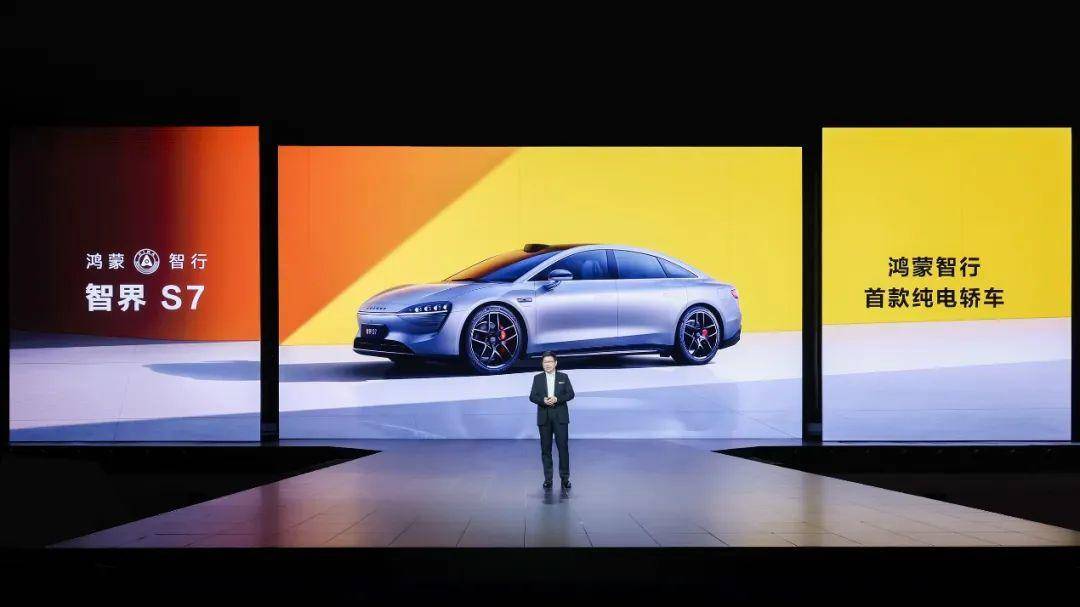
Huawei Yu Chengdong continues to blow the intellectual world S7.
I would like to ask, Star Road Star Era ES is a few pounds, and the same platform has been changed to a standard painting and altered, and it has been handed over to the intellectual S7, which is marketed and sold by Huawei’s Yu Dazui team. Can Dr. Gao Xinhua be unclear? !
Don’t talk about the great disparity in brand factors. No matter how big the disparity is, the product strength will not be comparable to that of millions of luxury cars. In the end, it can only be priced at 200,000 to 300,000 yuan. Besides, the brand premium of Qiruixingtu can’t be played. Isn’t there a world-renowned brand Huawei that is far ahead?
Why did Huawei’s Yu Chengdong team only dare to sell it for 200,000 to 300,000 yuan in the end?
This is unscientific, and it doesn’t conform to the consistent pricing style of Huawei products. Don’t tell me that Huawei’s brand premium has reached the automotive industry, and it doesn’t work. The younger generation of consumers who are increasingly capable of independent thinking and judgment don’t buy it.
In fact, today’s younger generation of consumers and the corresponding huge new energy automobile market in China, the so-called premium right and pricing system firmly controlled by joint venture brands and luxury car giants in the past can’t be said to have completely failed and collapsed, but at least it is becoming loose and useless to the naked eye.
Weilai, Ideality and Tucki, which have no brand foundation and historical accumulation, can still sell for 300,000 to 400,000 yuan or even more if the products are ready, and they can also applaud and make a lot of money, which is enough to show:
Today’s market and the main consumer groups have become more knowledgeable and pragmatic. Even if your products are new forces and brands, you will still pay the bill, and vice versa!

Yu Chengdong’s initial explosive boundary M5.
This also explains why BBA, which was invincible in the past and could be paid a premium of tens of thousands or hundreds of thousands by the logo, was voted as a "brand-name car" by the market and consumers in the era of electrification.
02
Young people are not easy to fool, and the threshold for cowhide explosion is lower.
Perhaps after experiencing the painful lessons of M5, especially M7, Huawei and the Yu Chengdong team are also deeply aware of this huge change point — — Young people are becoming more and more intelligent, rational and sober, leeks are getting harder to cut, and wool is getting worse and worse!
Therefore, we can see that not only has the new model M7 been greatly reduced in price, but this time Huawei and Chery have jointly built a packaged intellectual S7. Even though Yu Chengdong continues to brag and shout wildly, what products are more powerful than millions of luxury cars such as Tesla Model S and Porsche Taycan, but his actions and body are honest enough to betray himself.
24.98— 34.98Ten thousand yuan, Huawei Yu Chengdong in order to try its best to point out the intellectual S7, is also a spell, this starting price is even lower than the previous blind starting price of Star Road Star Era ES.

Yu Chengdong announces the price of Zhijie S7.
Of course, the traders of Xingtu brand are not stupid, and there is still some self-knowledge. After the blind booking price of 260,000-360,000 yuan was madly sprayed and ridiculed by netizens, the starting price of pre-sale at Guangzhou Auto Show has been lowered to 248,000 yuan not long ago. It is expected that there will be surprises in the official listing price and rights.
Otherwise, the intellectual S7 possessed by Huawei’s aura and boasted by Yu Chengdong, forced by reality, only dare to sell this price. How can we play the Star Road Star Era ES with similar price?
It’s just that for the old car owners and the younger generation of consumers of the series, after two years of Yu Chengdong’s over-exaggerated wind output and "harvested IQ tax", who in TN will continue to listen to Yu Dazui’s boasting and not making a draft, for the so-called"Chinese content"How about paying the bill?
By the way, thanks to Yu Chengdong’s super-flamboyant marketing style, many users of Huawei mobile phones and digital products on the Internet directly denounced:
"Because one person has begun to dislike Huawei", "Huawei will eventually be ruined by Yu Dazui" and "Huawei’s reputation as the old man Ren Zhengfei will be defeated by this Yu Dazui" … …
Fun observation:
Before, Huawei’s rotating chairman Xu Zhijun, Meng Wanzhou and other senior executives publicly reiterated in front of cameras and reporters that Huawei did not build cars, and almost "criticized" Yu Dazui by his first name!
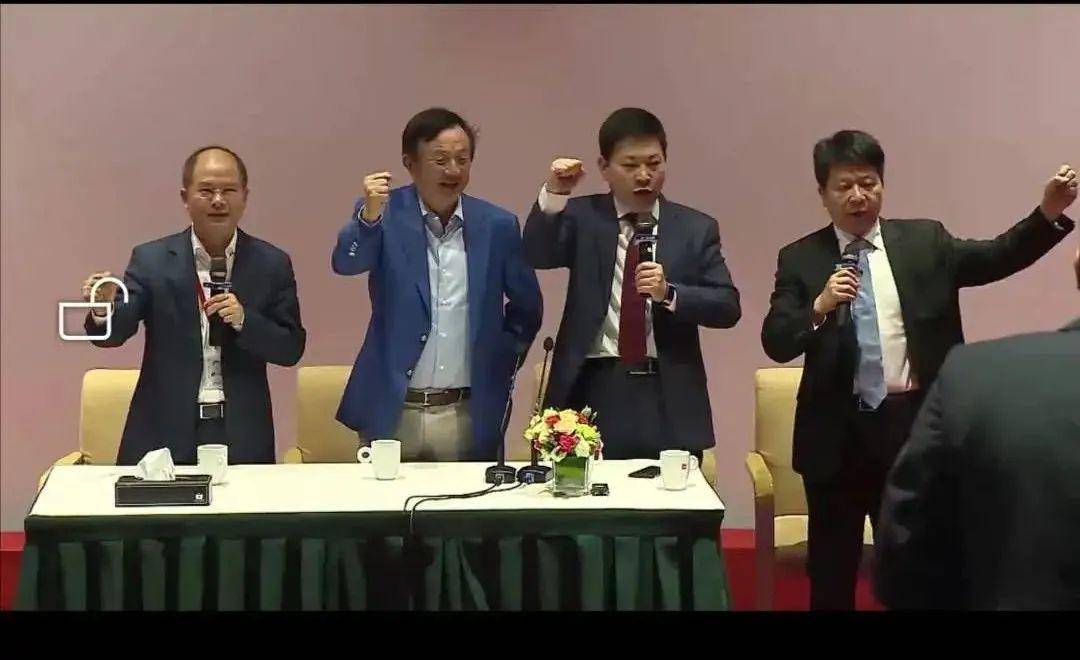

Ren Zhengfei, the founder of Huawei and a practical entrepreneur.
Call a spade a spade, saying that Yu Dazui, regardless of his willful acting style and grandiose manner, may damage Huawei’s brand image, which has been accumulated hard. Therefore, the company is "investigating" it internally.
Looking at it now, Yu Chengdong is obviously not affected by the so-called"investigate"Too much influence, flamboyant marketing style continues to blow, at this rate, don’t blow the reputation of the old man.
You see, the reputation of a generation of well-known entrepreneurs, Gree Dong Dajie, was not destroyed by the mouth of a free classmate. Huawei should be vigilant!
Do you charge for "love"? 3% cash withdrawal fee will be charged for donations from charity fundraising platform.
Original title: The public welfare fundraising platform collects cash withdrawal fees ranging from 3 yuan to 3%, and users express strong dissatisfaction.
Recently, public welfare fund-raising platforms such as Didi Chuxing and Easy Chuxing have made waves again, charging "support fees" or pilot service fees to donors or fund-raisers in different ways, causing dissatisfaction among users. The platform responded that the service fee is used to cover the cost and is not profitable.
On the fundraising platform, there is an invisible routine, and users say that they are aware of it.
According to the announcement issued by the platform, in order to maintain the stable operation of the platform, the platform service fee was charged to the fundraiser from the trial operation on April 7. The platform service fee is charged at 3% of the cash withdrawal amount of a single fundraising project, and the service fee of a single fundraising project does not exceed 5,000 yuan.
The reporter saw on the platform that taking a fundraising project as an example, the fundraiser raised a total of 108,046 yuan, but the actual withdrawal amount was only 104,156.02 yuan, of which 3,889.98 yuan was paid to the platform as a service fee.

The amount of money raised and the amount received by a fundraising project on the water drop platform.
In addition to water drop financing, platforms such as Easy Financing and Worry-Free Financing are also charging similar service fees. Unlike Didi Chuen, which collects fees from fund-raisers, Easy Chuen collects 3 yuan’s "service fee" in the name of "helping patients enjoy services such as quick cash withdrawal, technical support and exclusive consultants" every time the donor makes a donation. At the same time, if the donor doesn’t check the User Assistance Instructions and pay the relevant fees, he can’t make a donation for patients.
The reporter also learned in particular that users who donate in Beijing don’t need to pay the 3 yuan service fee when they donate, while donors from Henan, Shanxi, Heilongjiang and other places have to pay this fee, otherwise they will not be able to donate.
Faced with the complicated donation process, extra service fees and pop-up advertisements that will appear at every step, users have expressed their strong dissatisfaction with this kind of public fund-raising platform. "Stealing money from the pockets of the most difficult people" "It’s really uncomfortable to be detained in 3 yuan because I was kind enough to donate money to others" "I just want to donate it to people in need and don’t turn it into a profitable tool" "The easy operation is really fascinating. After paying attention to WeChat official account, it’s all about buying insurance pages".
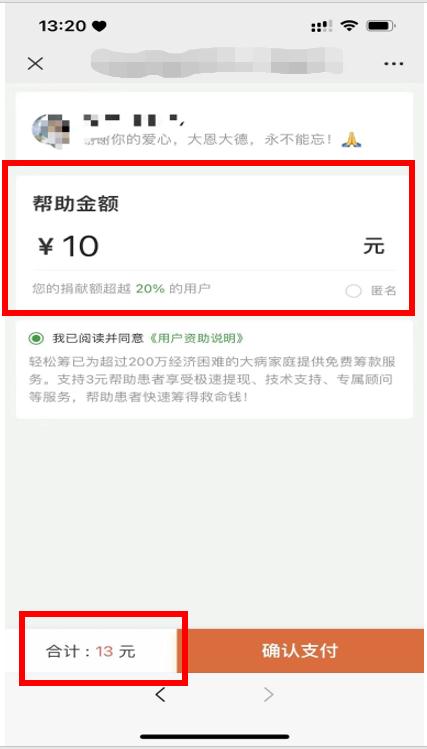
The donation amount and the amount to be paid by donors in Heilongjiang after checking the user agreement.
Whether the service charge is reasonable or not, the platform replies to cover the cost.
For charging 3% more service fee, the platform replied as follows: "The service fee is all kinds of costs incurred for fund-raising services, including the development, maintenance and other operating costs of the platform. In the past five years, these costs were borne by the company itself, and now we charge 3% of the withdrawal amount. We just want to cover the costs and don’t make a profit."
However, in April, 2021, when Shuidi Company was listed in new york, Shen Peng, CEO of Shuidi Company, said that Shuidi Company would not charge any fees and the company would bear the operating cost of the platform. Now, after only one year, the platform has changed its rhetoric. According to the 2021 financial report disclosed by U.S. stock company Shuidi, the net operating income of Shuidi Company in 2021 was 3.205 billion yuan, and its revenue mainly came from providing insurance distribution services to insurance companies and providing technical services to insurance companies and other insurance brokers or agencies. At the same time, Shuidi Company disclosed that its operating cost in 2021 was about 1.054 billion yuan, while its sales and marketing expenses were as high as 3.105 billion yuan.
As for the incident of easily collecting 3 yuan’s service fee, the easy-to-raise platform gives an explanation as follows: "Easy-to-raise fund-raising business for serious illness does not charge any handling fee. Since it was launched in 2014, it has easily raised medical assistance for more than 2 million seriously ill patients with financial difficulties. The assistance options that everyone pays attention to are voluntarily selected by users, with the aim of funding the platform to better serve seriously ill patients."
However, many donors said that, for example, the easy-to-raise platform clearly claimed to be the user’s voluntary choice, but in practice, it was impossible to donate money without voluntary consent, which forced donors who wanted to help others give their love to voluntarily pay extra fees to the platform. Even if the donor insists on refusing to pay the 3 yuan service fee, it is still necessary to pay the relevant fees first, and then it can be recovered through the complicated complaint process of the platform.

Users recover service fees through complaint channels, and the procedures are complicated.
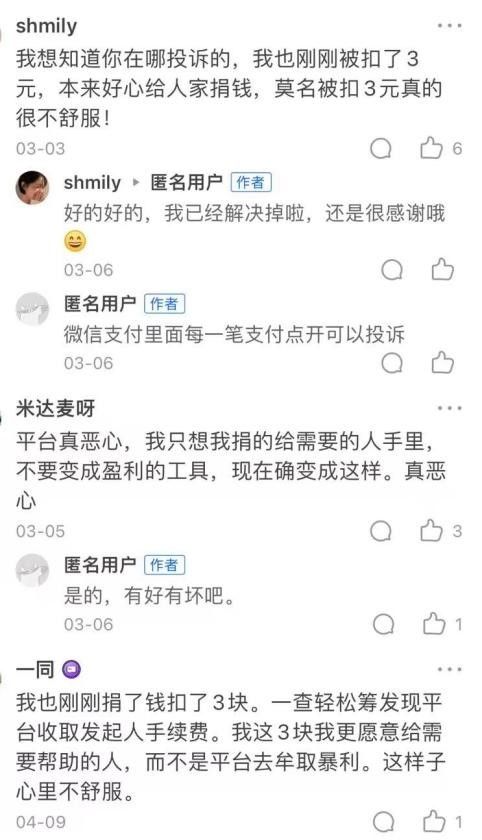
Internet users’ reaction to raising extra fees easily
(Intern reporter Wang Siqi reporter Wen Wei)
Source: Beijing Youth Daily
Understand illegal fund-raising and avoid scams and routines.
Illegal fund-raising
Main manifestations
Common manipulations
Typical routine

Main manifestations of illegal fund-raising
Illegal fund-raising activities involve a wide range of contents and various forms of expression. The Regulations on Prevention and Disposal of Illegal Fund-raising summarizes the following forms:
1. Establish Internet enterprises, investment and investment consulting enterprises, various trading places or platforms, farmers’ professional cooperatives, mutual funds organizations and other organizations to absorb funds;
2. Absorb funds in the name of issuing or transferring equity and creditor’s rights, raising funds, selling insurance products, or engaging in various asset management, virtual currency, financial leasing business, etc.;
3. In commercial activities such as selling goods, providing services, and investing in projects, absorbing funds in the form of promising to pay monetary, equity, physical and other returns;
4 in violation of laws, administrative regulations or the relevant provisions of the state, through the mass media, instant messaging tools or other means to publicly spread the information of absorbing funds;
5. Other acts suspected of illegal fund-raising.
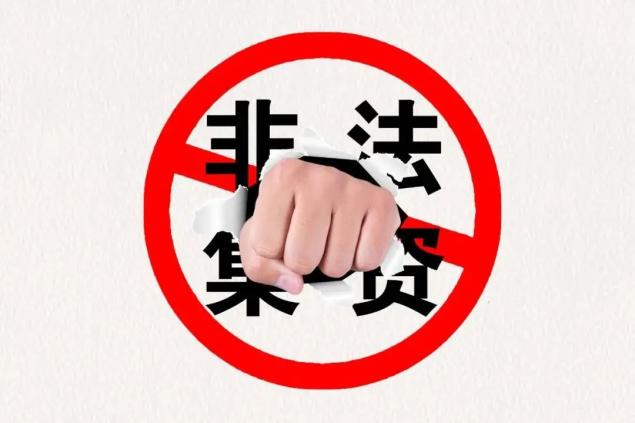

Four common techniques
The first is to promise high returns. The criminals fabricated the myth of "falling pie from the sky" and "becoming rich overnight" and promised investors high returns. In order to defraud more people to participate in fund-raising, illegal fund-raisers often pay their promised principal and interest in full and on time at the initial stage of fund-raising. After the fund-raising reaches a certain scale, they secretly transfer funds or abscond with money, causing economic losses to fund-raisers.
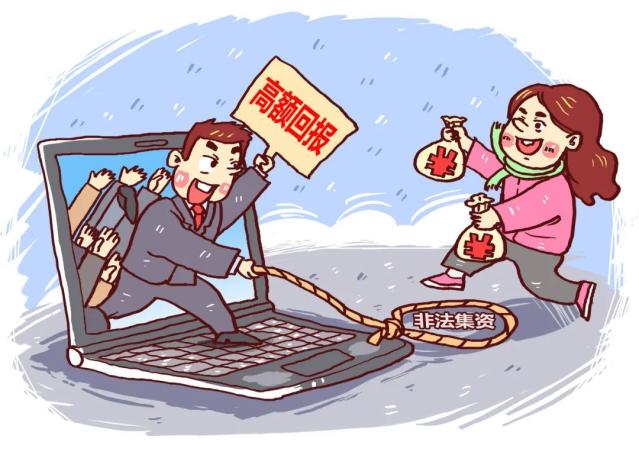
The second is to fabricate false projects. Most of the criminals fabricated all kinds of false projects by registering legitimate companies or enterprises, under the guise of responding to national industrial policies and carrying out entrepreneurial innovation, and some even organized free tours and inspections to defraud the public.
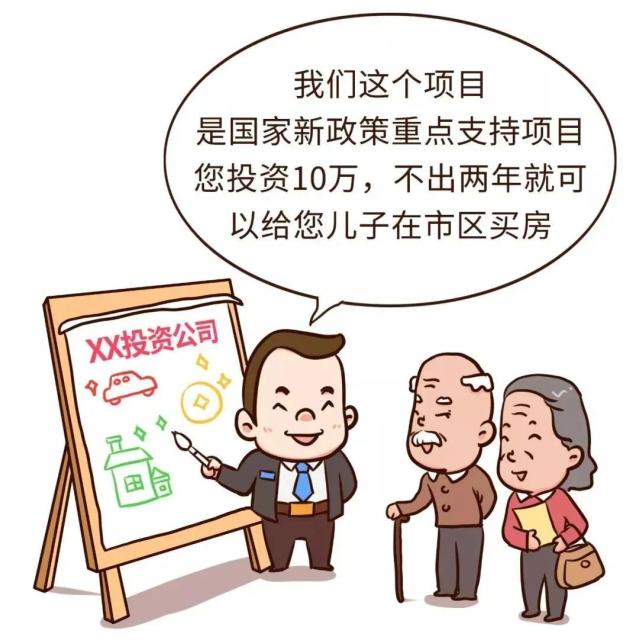
The third is to create momentum with false propaganda. Criminals often spend a lot of money on propaganda, hiring celebrity endorsements and celebrity platforms, publishing advertisements in major radio, television, internet and other media, publishing interview articles in famous newspapers, hiring people to widely distribute leaflets, making social donations and other ways to create false momentum.
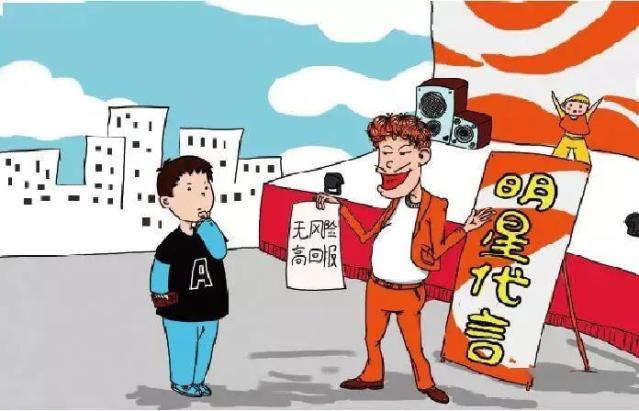
The fourth is to use family to deceive. Some illegal fund-raising participants, in order to complete or increase their own performance, sometimes adopt pyramid schemes, and do not hesitate to use their family ties and geographical relations to fabricate lies about their high returns, so as to attract relatives, friends, classmates or neighbors to join them, so that the participants spread rapidly and the scale of fund-raising continues to expand.

"Four Steps" of Typical Illegal Fund-raising Activities
Step 1: Draw a cake. Illegal fund-raisers will weave one or more projects that are as high as possible. Under the guise of "new technology", "new revolution", "new policy", "blockchain" and "virtual currency", draw a blueprint with rich expected returns, and "hang up" the appetite of fund-raising participants, giving them the illusion of "don’t miss it" and "now or never". Illegal fund-raisers will generally draw "cakes" to attract the attention of participants as much as possible.
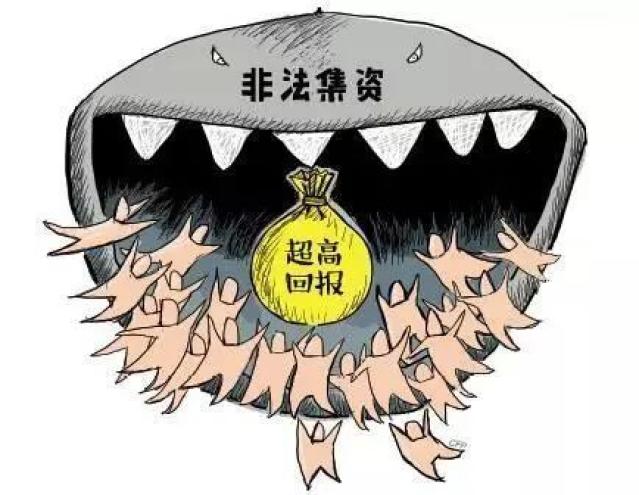
The second step: build momentum. Use all resources to make the momentum bigger. Illegal fund-raisers usually hold various publicity activities, such as press conferences, product promotion meetings, on-site observation meetings, experience days, knowledge lectures, etc. Organize group tours, inspections, etc., and give small gifts such as rice flour oil and telephone bills; A large number of true or false "technical certification", "award certificate" and "government approval" are displayed; Publish some video materials inspected by leaders, and take photos with government officials and stars; Deliberately selecting the event in the government conference center and auditorium is extremely deceptive because of its large scene and high specifications.
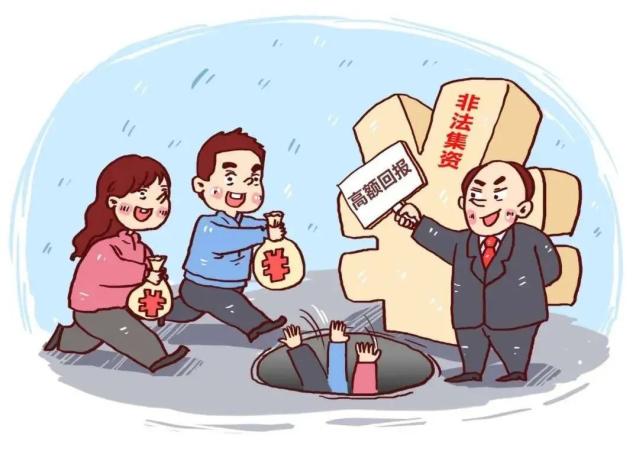
Step 3: suck gold. Try to get the money out of your pocket. Illegal fund-raisers give participants a first taste of "sweetness" through rebates and dividends, making them believe that putting money in his place not only has considerable income, but also is safer than putting it in his pocket. Participants not only pour out their own money, but also mobilize relatives and friends to join, and the amount of fund-raising is getting bigger and bigger.
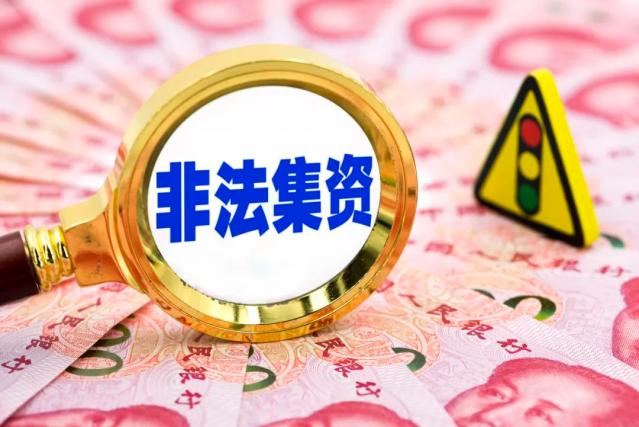
Step 4: Run away. Illegal fund-raisers often run away after "sucking money" for a period of time, or because people who were originally "Ponzi scheme" went to the building, or because of poor management, the capital chain was broken. Fund-raising participants suffered heavy economic losses, or even lost all their money.

Common routines of illegal fund-raising
In order to lure the masses to achieve the purpose of illegal fund-raising, criminals usually take the following measures to defraud the masses of trust.
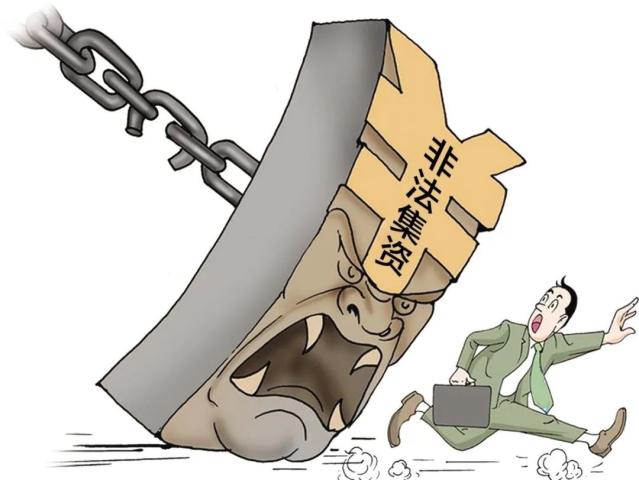
1. Decorate the facade of the company and create the illusion of strength. Criminals often set up companies to handle business licenses, tax registration and other procedures, which seem legal, but in fact they have no financial qualifications. These companies or offices are high-end and luxurious, or publicize the background of state-owned assets, or invest heavily in packaging publicity through various media or even CCTV, or hold promotion conferences and knowledge lectures in high-end places (such as the Great Hall of the People), inviting celebrities, scholars and officials to build momentum on the platform, showing photos with leaders and various awards, which is more deceptive.
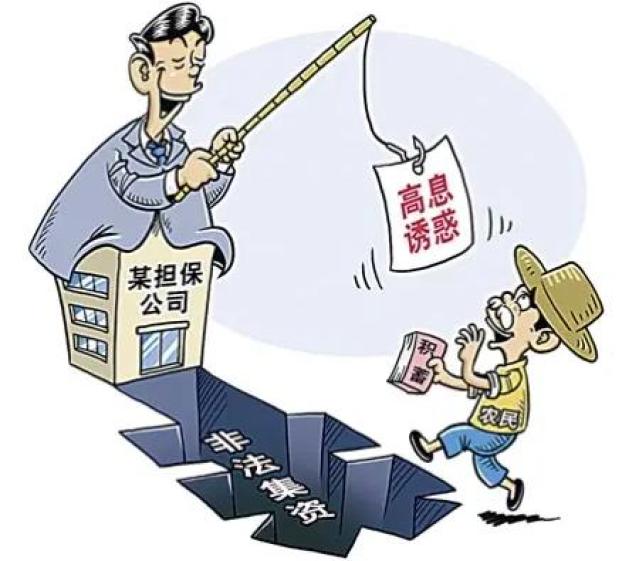
2. Fabricate investment projects to dispel people’s doubts. From the past forms of agriculture, forestry and mining development, private lending, real estate sales, original share issuance, franchise operation, etc., it is gradually upgraded and packaged into various wealth management projects such as investment and wealth management, wealth management, financial mutual assistance and wealth management, overseas listing, private equity, etc., and promises to be guaranteed, repurchased, low risk and high return.
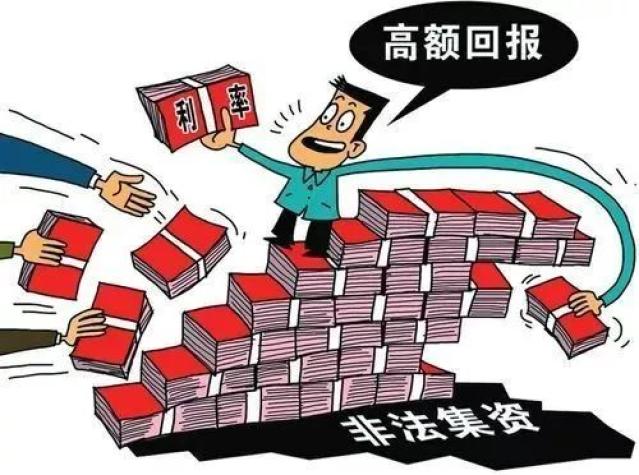
3. Confuse the concept of investment and increase the difficulty of identification. Criminals blow listing in local equity exchange centers into listing, and confuse listing in American OTCBB market with listing on NASDAQ; Some use new terms such as electronic gold, investment funds and online speculation to confuse the masses and pretend to be new investment tools or financial products; Some use monopoly, agency, franchise chain, consumption value-added rebate, e-commerce and other new business methods to deceive the people to invest.
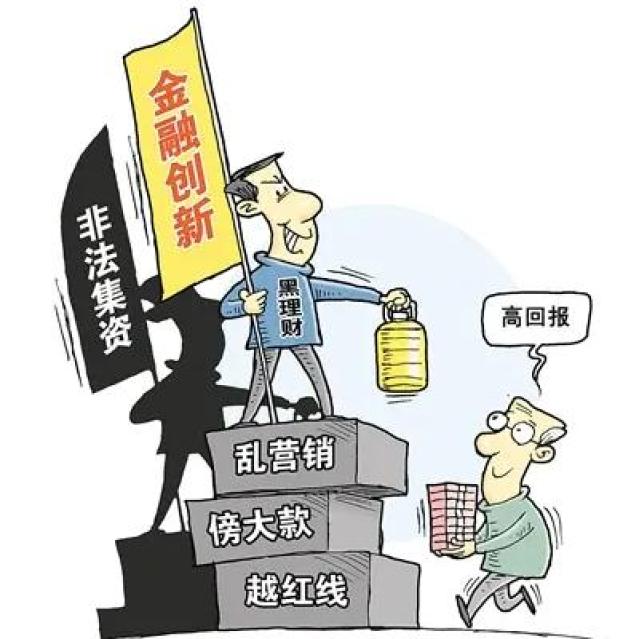
4. Promise high returns and fabricate the myth of "getting rich". Lure at high interest is the only way for all fraud criminals to deceive the masses. At first, the criminals paid the principal and interest of the early investors in full and on time, then they robbed Peter to pay Paul, and used the money of the later people to pay the previous principal and interest. After reaching a certain scale, they secretly transferred the funds and fled with the money.
Source: Beijing Center for Disease Control and Prevention
Original title: "Understanding illegal fund-raising and avoiding scams and routines"
Read the original text
Four departments jointly provide employment opportunities for graduates through multiple channels to promote employment through entrepreneurship.
CCTV News:With many college students returning to school one after another, the employment situation of graduates this year has also attracted much attention. The data shows that there are more than 8.7 million college graduates this year, a record high. In order to alleviate the employment pressure, the National Development and Reform Commission, the State-owned Assets Supervision and Administration Commission, the Ministry of Education and the Ministry of Human Resources and Social Security jointly launched the "School-enterprise Bank" special action in Beijing on the 8th, releasing a number of new jobs for college graduates and promoting employment through entrepreneurship.

The reporter learned that the "School-Enterprise Bank" special action will give full play to the leading role of 13 demonstration bases of central enterprises such as State Grid, China Mobile and Aerospace Science and Technology, and release a number of jobs to attract college graduates’ employment. We will provide employment opportunities for graduates through various channels, such as recruiting entrepreneurial partners, recruiting employees, and providing internships and trainee positions.

In the special action, 19 university demonstration bases, including Tsinghua University, Peking University and Shanghai Jiaotong University, will select a number of outstanding college students’ entrepreneurial projects with market prospects and entrepreneurial will, and release them to enterprise demonstration bases, which will support docking and incubation on the basis of merit.
Behind Japan’s sudden sanctions against South Korea: experts say it is still measured.
On July 1st, the Japanese government, which just finished the G20 reception, suddenly announced that it would restrict the export of three kinds of semiconductor materials to South Korea. According to Reuters’s report, Japan may impose this sanction as early as July 4th.
On the afternoon of the same day, the first official (deputy minister) of the South Korean Foreign Ministry, Zhao Seung-young, summoned the Japanese ambassador to South Korea and protested to him. South Korea’s Minister of Industry, Trade and Resources Cheng Yunmo said that he would consider resorting to the World Trade Organization.
According to the analysis of Nikkei Chinese Network, the semiconductor materials involved in this sanction are all materials for making TV and smart phone components. Japanese suppliers have an absolute dominant share in the market of these materials. Once the sanctions take effect, it will be difficult for Korean buyers to find alternative supply channels in the market, which will inevitably bring potential impacts to companies such as Samsung and LG in South Korea, and may also affect some Japanese manufacturers, which will have huge side effects in the long run.
At the moment when South Korea’s economic performance is not optimistic, how much impact Japan’s sanctions will have on South Korea’s economy has become a concern of many parties. According to Yonhap News Agency’s report on July 1, the Ministry of Industry, Trade and Resources of the Republic of Korea said on the same day that due to factors such as semiconductor and sluggish exports to China, South Korea’s exports in June decreased by 13.5% year-on-year to US$ 44.18 billion, showing a downward trend for seven consecutive months, and the decrease rate reached a new high in three years and five months.
However, there are also views that Japan’s sanctions are rare, but they are not intended to make South Korea "hurt." Hu Lingyuan, director of the Center for Japanese Studies at Fudan University, believes that this round of diplomatic turmoil between Japan and South Korea can be understood from the perspectives of historical issues between Japan and South Korea and their respective domestic politics.
Sanctions and countermeasures are still measured, but the business community has begun to worry.
In addition to the semiconductor industry, according to the Nikkei Chinese website, Japan also plans to remove South Korea from the "white list" of friendly countries in security protection in August.
According to the above report, Japan will strengthen South Korea’s export control in two stages. First, after July 4th, three products, fluorinated polyimide, photoresist and etching gas (hydrogen fluoride), are required to be licensed and examined separately. And it is planned to exclude South Korea from the "white list" of friendly countries in security in August.
According to the report, the list includes 27 countries including the United States, Germany and France, and South Korea will be the first country to be eliminated. If it is not on the list, the products that may be transferred to the military need to be approved by the Japanese Ministry of Economy, Trade and Industry when they are exported, and electronic parts, precision parts, machine tools, etc. are all controlled objects.
However, although the volume is not small, it seems that the leaders of Japan and South Korea have no intention of completely "freezing" the relations between the two countries.
"The semiconductor industry is not a particularly sophisticated field. Abe beat South Korea in this field and expressed his dissatisfaction, which can convey a kind of ‘ I’ll punish you for doing something wrong ’ The signal. It’s like having a bad breath. " Hu Lingyuan said.
Regarding the export control this time, Keisuke Yusheng Tian, executive director of Deloitte Management Consulting Company in Japan, said that "since it is an area where Japan can make its own judgment, it is estimated that it will not violate the rules of the World Trade Organization". However, Professor Fuyong Youxia of Waseda University thinks: "This is a measure in a gray area suspected of violating WTO rules".
"In fact, after Japan took the initiative to sanction, South Korea was a bit passive. It seems to be a loss to overthrow the agreement before, and South Korea’s domestic economy is not performing well now. In order to lose points, the Moon Jae in administration must fight back against Japan. " Hu Lingyuan analyzed that "South Korea will take some retaliatory measures, but it will be restrained. In fact, Japan’s sanctions are also moderate. Both sides have a deep concern for their domestic people ‘ Show ’ The ingredients will not really cause particularly deep harm to each other. "
In fact, many international factors also restrict the severity of Japan-South Korea bad relations. Japan has just finished the reception for the G20 Osaka Summit, and seems unwilling to be too "high-profile" when imposing sanctions on South Korea.
"The reason why sanctions are announced now is because Japan does not want this matter to affect the G20 meeting." Li Kaisheng told The Paper, "When all countries are opposed to the unilateralism of the United States, as the host of the G20, Japan does not want to affect its image because of sanctions."
"In addition, Abe can’t make Japan-ROK relations too rigid, and we must grasp the balance." Hu Lingyuan analyzed and said, "On the one hand, Abe wants to make some noise, but on the other hand, he can’t overdo it. In that case, it is difficult to score in China."
At the moment when the situation on the peninsula is easing, the factors of the United States and North Korea are also variables that cannot be ignored when the Abe government makes decisions.
"Abe must also take into account the feelings of Trump and Kim Jong-un. Trump just met with Kim Jong-un. In the context of the easing of the situation on the peninsula, Japan also wants to improve relations with North Korea. In Kim Jong-un’s view, Moon Jae in’s efforts to improve North-South relations are relatively positive. Under this circumstance, if Abe is too tough on South Korea, Kim Jong-un will not feel very happy. " Hu Lingyuan said.
However, the industry has begun to worry about the follow-up impact of sanctions.
According to the Nikkei Chinese website, the relevant person of SK Hynix said in an interview that the inventory was "less than 3 months". When asked, "If we can’t purchase more, will the factory stop production in three months?", the answer was "Yes".
Samsung Electronics evaded the specific instructions and only said that it was "investigating the situation in detail".
On the other hand, however, Korean companies have a high market share in the semiconductor field. In terms of semiconductor sales, South Korea’s Samsung Electronics topped the list, while SK Hynix ranked third. Especially in the storage semiconductor for data storage, Korean companies have strong advantages. A large Japanese electromechanical company is worried that "if the supply of storage semiconductors in South Korea stagnates, which will lead to a reduction in the production of Apple’s iPhone, it may also have an impact on the supply of parts and components of the company".
Sanctions have obvious symbolic significance, and both sides focus on internal affairs.
"Japan chose the semiconductor industry to start, which is mainly a symbolic act. It is not that Japan and South Korea will soon be in the semiconductor industry ‘ Go to war ’ Yes. " Hu Lingyuan told The Paper (www.thepaper.cn), "Abe’s action is first considered for the Senate election in late July."
The Senate election to be voted on July 21st is the first parliamentary election in Japan since the era of "making peace". Abe attaches great importance to this election. According to Xinhua News Agency, Abe’s Liberal Democratic Party is continuing to seek to amend Article 9 of the Constitution, so it regards constitutional amendment as one of the focuses of the Senate election. One of the highlights of the election is whether the forces supporting constitutional amendment can continue to maintain a two-thirds advantage in the Senate. However, Japan’s Kyodo News reported at the end of June that there are currently 78 people in the Senate who support constitutional amendment without re-election, and Abe still needs to win the support of 86 people to form a two-thirds advantage. Therefore, it is difficult to cross the threshold of constitutional amendment as it was three years ago.
In addition, just on the 25th of last month, Shinzo Abe just faced a cabinet no-confidence resolution jointly submitted by five Japanese opposition parties, including the Constitutional Democratic Party. Although Abe successfully "passed the customs" with the majority opposition from the people, the two parties and the Japan Reform Association, Abe will still face many uncertainties in the face of the decisive battle of the Senate election to be held in late July.
In this regard, Hu Lingyuan analyzed that the election campaign is about to enter a climax. If the election is very beneficial to Abe at that time, it is not excluded that he wants to "bundle" the elections of the Senate and the House of Representatives at the same time, further consolidate his domestic status, and even serve as the fourth prime minister. Therefore, Abe has the motivation to use his relationship with South Korea to do some articles.
In addition, Abe’s appointment in the diplomatic field has recently been incompetent, so he intends to score points in diplomacy and win the favor of voters. According to Hu Lingyuan’s observation, Abe’s diplomacy with China has been relatively successful recently, and other directions are all promising.
"The G20 is going well, but Japan-US relations are not optimistic. Trump also mentioned the Japan-US security treaty, and the United States is expected to put pressure on Japan after the Japanese Senate election. " Hu Lingyuan said, "Russia has also found it difficult to break through Abe, with Putin ‘ Make friends with ’ It seems that the trick can’t be played anymore. Therefore, Abe’ s diplomatic pressure is still relatively large. "
Abe is not the only one facing internal pressure. Moon Jae in’s South Korea’s economic performance was mediocre, and the economic growth rate showed a red light. On April 2 this year, the data released by the Ministry of Trade, Industry and Energy of the Republic of Korea showed that after the export data in February shrank at the fastest speed in the past three years, the total national export of South Korea in March was 47.11 billion US dollars, down 8.2% from the same period of last year, and fell for four consecutive months since December last year. On the 9th of the same month, the International Monetary Fund (IMF) predicted the list of countries whose economic growth rate will decline this year, and South Korea was among them.
"The Moon Jae in government is facing great pressure in the economic field. They promised to increase welfare, but the economic data is not optimistic at all. " Song Zhixun, a 27-year-old Korean youth, told The Paper, "If you lose points in diplomacy, it will be very unfavorable to Moon Jae in."
Japan and South Korea are not in a cold day, and Japan is suffocating.
In addition to the internal factors of the two countries, for the Japanese and Korean people, Japan’s rare sanctions are not completely unexpected. The two countries have been feuding for a long time because of historical issues, and they are deeply divided.
According to the Kyodo News Agency, a joint survey conducted by Genron NPO, a Japanese non-profit organization, and the Institute of East Asian Studies (EAI), an independent think tank in South Korea, from May to June showed that more than 60% of the respondents in both countries said that they thought the bilateral relations between Japan and South Korea had deteriorated, while only 6.1% of Japanese respondents and 3.7% of Korean respondents still thought that the relations between the two countries were "good".
Compared with the same period of last year, the proportion of Japanese respondents who thought bilateral relations were "bad" jumped to 63.5%, an increase of 23 percentage points, the highest level since the first survey in 2013.
Kyodo News analyzed that one of the main reasons for the deterioration of relations between the two countries is the position of the Supreme Court of Korea on wartime workers. Japan insists that South Korea gave up the right to claim compensation in the 1965 Basic Treaty between Korea and Japan, and Japan provided huge funds for "economic cooperation" to South Korea, including grants worth 300 million US dollars and loans worth 200 million US dollars over 10 years — — The total amount was 1.5 times that of the national budget of Korea at that time.
In this regard, Naiwang Muxia, a Japanese college student, told The Paper that South Korea could not forget what Japan did as a colony during World War II, but Japanese officials believed that it had provided economic compensation to South Korea after the war, so they did not want this history to be mentioned again. "Japan (the government) feels that we have solved this problem with money. If South Korea wants Japan to listen to their claims, let’s return the money to Japan first." Naiwang Muxia said.
调查还显示,日韩关系迅速恶化的另一个原因是去年12月韩国海军驱逐舰向日本海上自卫队巡逻机照射火控雷达事件。根据该调查,日韩双方有超过60%的受访者都表示相信本国政府提供的事件版本。日方称此次事件是“极其危险的行为”,并向韩方提出严正抗议。韩方则解释称这是正常作战行动,并非针对日本。
基于上述纠葛,在刚刚结束的日本大阪G20峰会期间,日韩两国领导人并未举行双边会谈,仅仅在开幕时作为主宾双方礼节性地握手合照。
“历史问题久拖不决,日本确实觉得心里有一口‘恶气’。日方觉得,朴槿惠已经和日本签订了一个关于‘慰安妇’问题的协议,但现在韩国也不承认了。”胡令远解释说。
日本政府认为韩国重提二战时期日军强征劳工的问题违反了两国之间的《日韩请求权协定》。针对韩国于6月19日提出由日韩两国企业共同出资赔偿的解决方案,日本官房长官菅义伟表示拒绝,称“完全无法接受”。
"In Japan’s view, since there is an agreement between the two governments, it cannot be said that the government will overturn the agreement as soon as the people are emotional. This makes Abe feel very faceless. " Hu Lingyuan said.
"In fact, it is understandable that Japan is a country with strong self-esteem." Song Zhixun, a 27-year-old Korean youth, gave his own understanding of the deterioration of relations between the two countries in an interview with The Paper. "They (Japan) are jealous of us as everyone knows, and (Korea) is obviously a colony of the former (Japan), but many industries and even cultures, stars and movies are occupied by South Korea. It must feel bad."
"Regarding Japan-ROK relations, there are two levels of government and people." Song Yue, director of the Korea Institute of East Asian Studies, who conducted the survey, said. On the other hand, Yasushi Kudo, the head of Genron NPO in Japan, also said that although most people think that Japan-ROK relations have deteriorated, the general impression of another country is not so bad. "Both governments should admit that their people want to improve this relationship." Kudo Jing said.
"We will hate the Japanese government, but we won’t hate the Japanese, especially the young people have no opinions on the Japanese." Song Zhixun said. Speaking of the trade sanctions that Japan has just announced against South Korea, Song Zhixun believes that this unfavorable situation for both sides will not last long. "It’s just temporary. (Japan and South Korea) was originally an alliance. In fact, there will be no reaction (relationship) no matter how bad it is."